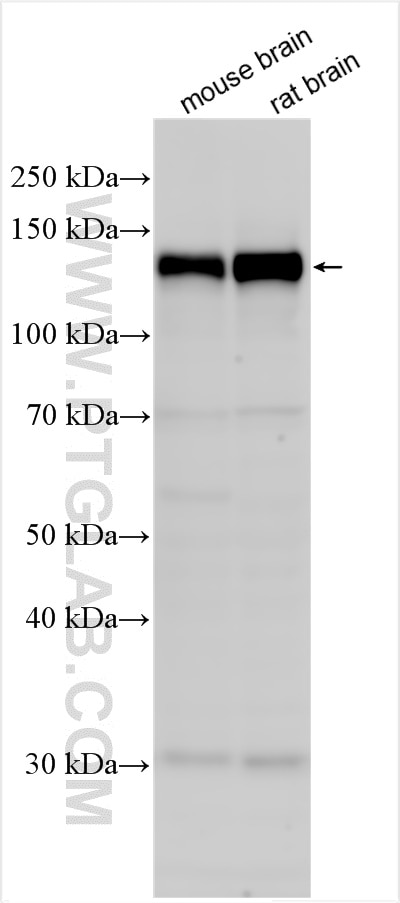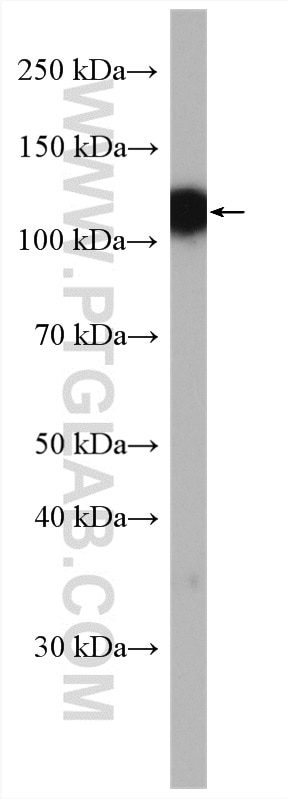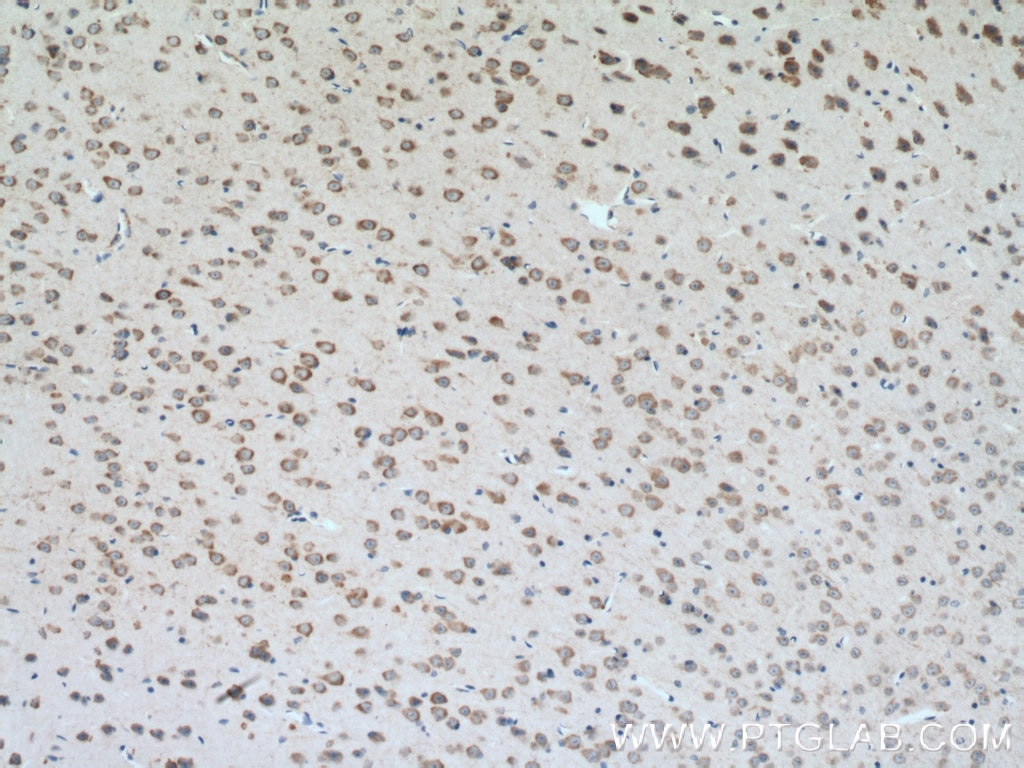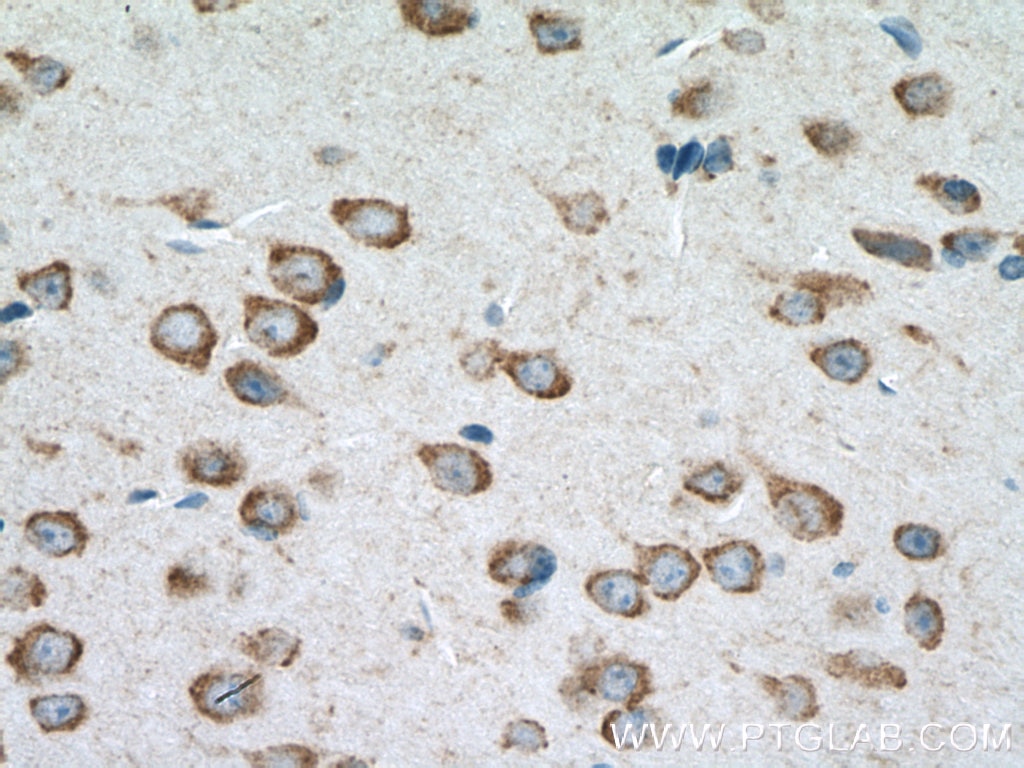Tested Applications
| Positive WB detected in | mouse brain tissue, pig brain tissue, rat brain tissue |
| Positive IHC detected in | mouse brain tissue Note: suggested antigen retrieval with TE buffer pH 9.0; (*) Alternatively, antigen retrieval may be performed with citrate buffer pH 6.0 |
Recommended dilution
| Application | Dilution |
|---|---|
| Western Blot (WB) | WB : 1:500-1:1000 |
| Immunohistochemistry (IHC) | IHC : 1:50-1:500 |
| It is recommended that this reagent should be titrated in each testing system to obtain optimal results. | |
| Sample-dependent, Check data in validation data gallery. | |
Published Applications
| KD/KO | See 1 publications below |
| WB | See 5 publications below |
| IF | See 1 publications below |
| IP | See 1 publications below |
| CoIP | See 1 publications below |
Product Information
13302-1-AP targets CLSTN3 in WB, IHC, IP, CoIP, ELISA, IF applications and shows reactivity with mouse, rat, pig samples.
| Tested Reactivity | mouse, rat, pig |
| Cited Reactivity | human, mouse |
| Host / Isotype | Rabbit / IgG |
| Class | Polyclonal |
| Type | Antibody |
| Immunogen |
CatNo: Ag4107 Product name: Recombinant human CLSTN3 protein Source: e coli.-derived, PGEX-4T Tag: GST Domain: 206-289 aa of BC039075 Sequence: VLGLVRIHSLHRRVSGAGGPPGASSDPKDPDLFWDDSALTIIVNPMEVRGLGKRGSVGSRLWSTHVLPESAVLCDGGCWGPAGG Predict reactive species |
| Full Name | calsyntenin 3 |
| Calculated Molecular Weight | 968 aa, 107 kDa |
| Observed Molecular Weight | 110-130 kDa |
| GenBank Accession Number | BC039075 |
| Gene Symbol | CLSTN3 |
| Gene ID (NCBI) | 9746 |
| RRID | AB_2877936 |
| Conjugate | Unconjugated |
| Form | Liquid |
| Purification Method | Antigen affinity purification |
| UNIPROT ID | Q9BQT9 |
| Storage Buffer | PBS with 0.02% sodium azide and 50% glycerol, pH 7.3. |
| Storage Conditions | Store at -20°C. Stable for one year after shipment. Aliquoting is unnecessary for -20oC storage. 20ul sizes contain 0.1% BSA. |
Background Information
Calsyntenins, also called alcadeins, are cadherin superfamily proteins first identified as synaptic proteins (PMID: 11161476; 12498782). Calsyntenins are type I transmembrane proteins with extracellular domains containing two cadherin repeats and an LNS (laminin, neurexin, sex hormone-binding globulin) domain (PMID: 24613359). Calsyntenin-3 (CLSTN3, also known as alcadein-beta) is a synapse-organizing protein that promotes the development of synapses. It is a postsynaptic adhesion molecule that binds to presynaptic neurexins to mediate both excitatory and inhibitory synapse formation (PMID: 25352602; 24613359).
Protocols
| Product Specific Protocols | |
|---|---|
| IHC protocol for CLSTN3 antibody 13302-1-AP | Download protocol |
| WB protocol for CLSTN3 antibody 13302-1-AP | Download protocol |
| Standard Protocols | |
|---|---|
| Click here to view our Standard Protocols |
Publications
| Species | Application | Title |
|---|---|---|
Mol Metab CLSTN3 gene variant associates with obesity risk and contributes to dysfunction in white adipose tissue. | ||
Int J Biol Macromol Calsyntenin-3 interacts with the sodium-dependent vitamin C transporter-2 to regulate vitamin C uptake | ||
Neuroscience CircAFF2 promotes neuronal cell injury in intracerebral hemorrhage by regulating the miR-488/calsyntenin-3 axis
| ||
Int J Mol Sci Transcriptome Profile in the Mouse Brain of Hepatic Encephalopathy and Alzheimer’s Disease |










